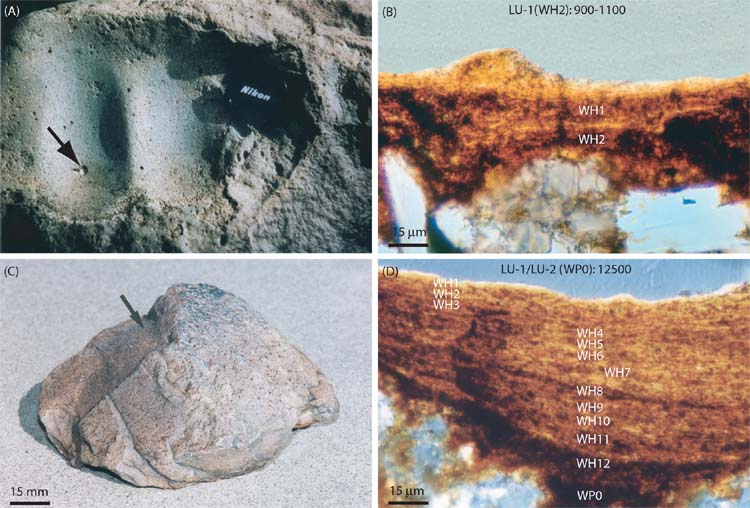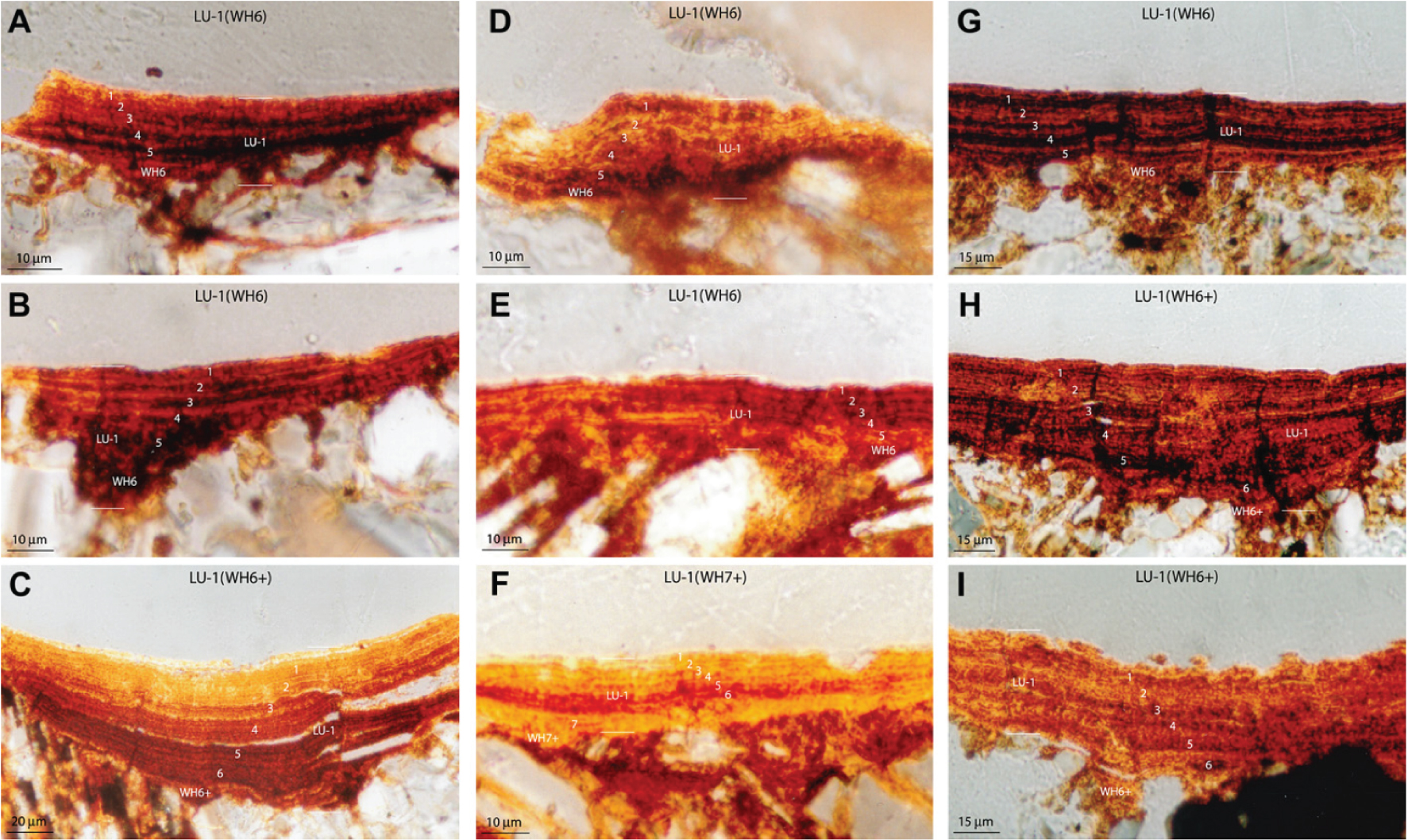

Figure Caption: (A) A varnished grinding stone from Chili of northern New Mexico, where numerous Anasazi pottery shards were found. (B) Rock varnish from the grinding stone in (A) displays a latest Holocene layering sequence LU-1 (WH2), suggesting a varnish-based minimum age of 900-1100 cal yr BP for abandonment of this occupation site by the Anasazi Indians. (C) A varnished primary stone core from Ocotillo of soutern California (collected by Jay von Werlhof, Desert Museum of Imperial Valley College). (D) Rock varnish from the primary core in (C) displays a latest Pleistocene layering sequence LU-1/LU-2 (WP0), suggesting a varnish-based minimum age of 12500 cal yr BP for the making of this stone artifact by the Paleo-Indians. A camera cap in (A) is for scale; arrows in (A) and (C) point to sites where varnish-filled microbasins were cored with a mini-drill (4 mm in diameter) for dating. Please see Liu and Broecker (2007) for more information about application of VML dating in geoarchaeology.

Figure Caption: Varnished stone artifacts from the Quebrada de Amaicha, Tucuman, Argentina (Data source: Baied and Somonte, 2013).

Figure Caption: Optical microstratigraphies in varnish samples ARG-201 (microbasins A, B, C), ARG-202 (microbasins D, E, F), and ARG-203 (microbasins G, H, I). VML dating indicates a mid-Holocene (6500-7300 cal. years BP) human occupation at the Quebrada de Amaicha, Tucuman, Argentina (Data source: Baied and Somonte, 2013).